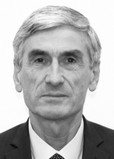Physical recreation service to protect students’ health
Фотографии:
ˑ:
PhD, Associate Professor M.Kh. Khaupshev1
M.M. Kirzhinov1
A.M. Soblirov1
PhD, Associate Professor E.B. Yakhutlova2
1Berbekov Kabardino-Balkarian State University (KBSU), Nalchik
2Kokov Kabardino-Balkarian State Agricultural University (KBSAU), Nalchik
Objective of the study was to find and test the most efficient methods and tools for the university students’ health protection by physical recreation service in natural environments, with the 1-2-year students of the Republican universities sampled for the study. The study data including the physicality and functionality test rates were obtained using an integrated physical health monitoring method (certified by Patent #2014661453). The 1-2-year students (n=67) of Berbekov Kabardino-Balkarian State University (KBSU) and Kokokov Kabardino-Balkarian State Agricultural University (KBSAU) were sampled for the study purposes. The physical recreation model dominated by the 4-6-hour weekend trekking tours was tested in the Nalchik suburbs to complement the elective academic sport practices. The study data showed the active trekking practices in natural environments being of significant highly positive (р<0.05) effect on the cardiovascular and respiratory functions including HRV, VC and AP and working capacity assessed by S.P. Letunov’s tests. The positive changes in the sample functionality rates were found to improve the academic and sport progress in the sample. Based on the study data and analysis, we recommend the weekend trekking tours being implemented in the academic off-class physical education programs to complement the traditional physical education service.
Keywords: student, health, healthy lifestyle, recreational activity, natural environment.
References
- Akhmetshin A.M. Turizm kak metod reabilitatsii i ozdorovleniya invalidov i pozhilykh lyudey [Tourism as a method of rehabilitation and health improvement of disabled and elderly people]. Ufa: Center for Medical and Psychological Rehabilitation of the BRO WAI publ., 2000, 69 p.
- Bal'sevich V.K., Lubysheva L.I., Komkov A.G., Shelkov O.M. Innovatsionnye tekhnologii modernizatsii fizicheskogo vospitaniya shkolnikov. Sportivno-orientirovannoe fizicheskoe vospitanie uchaschikhsya obscheobrazovatelnykh shkol [Innovative technologies of modernization of school physical education. Sports-oriented physical education of general education school students] . St. Peterburg: SPbSRIPC publ., 2006, 72 p.
- Bulich E.G., Muravov I.V. Zdorovye cheloveka: Biologicheskaya osnova zhiznedeyatelnosti i dvigatelnaya aktivnost v ee stimulyatsii [Human health: Biological basis of vital activity and motor activity in its stimulation]. Kiev: Olimpiyskaya liter. publ., 2003, 424 p.
- Vydrin V.M., Jumaev A.D. Fizicheskaya rekreatsiya - vid fizicheskoy kultury [Physical recreation as kind of physical culture]. Teoriya i praktika fiz. kultury, 1989, no. 3, pp. 2-3.
- Gavrilov D.N. Osobennosti monitoringa fizicheskogo sostoyaniya naseleniya [Features of monitoring of physical condition of population]. Teoriya i praktika fiz. kultury. 2006, no. 3, pp. 60-62.
- Landa B.Kh. Metodika kompleksnoy otsenki fizicheskogo razvitiya i fizicheskoy podgotovlennosti. Ucheb. posobie [Methods for integrated assessment of physical development and physical fitness: Study guide]. Moscow: Sovetskiy sport publ., 2006, 208 p.
- Fedotov Y.N., Vostokov I.E. Sportivno-ozdorovitelny turizm [Sport-health tourism]. Moscow: Sovetskiy sport publ., 2006, 364 p.




 Журнал "THEORY AND PRACTICE
Журнал "THEORY AND PRACTICE